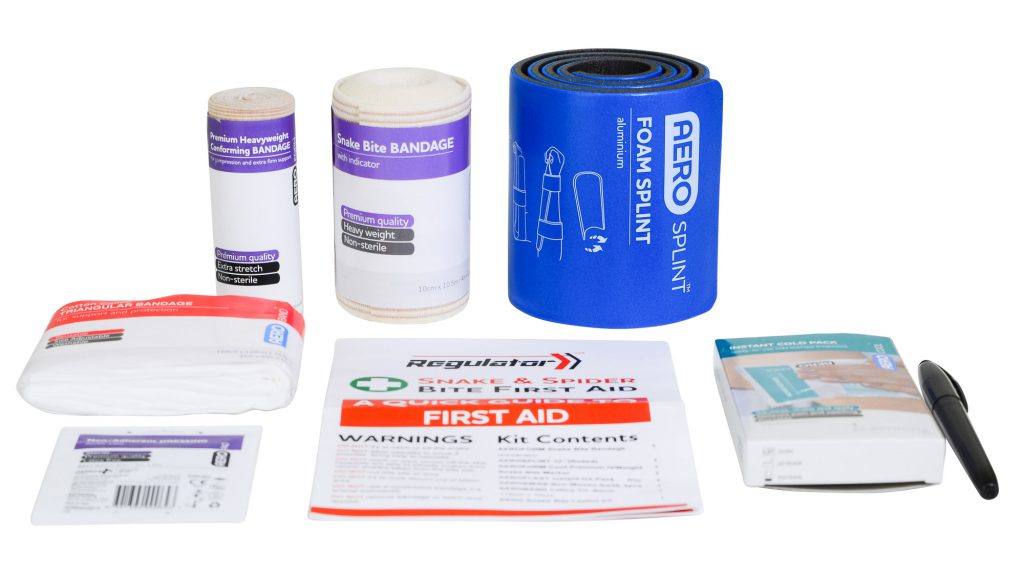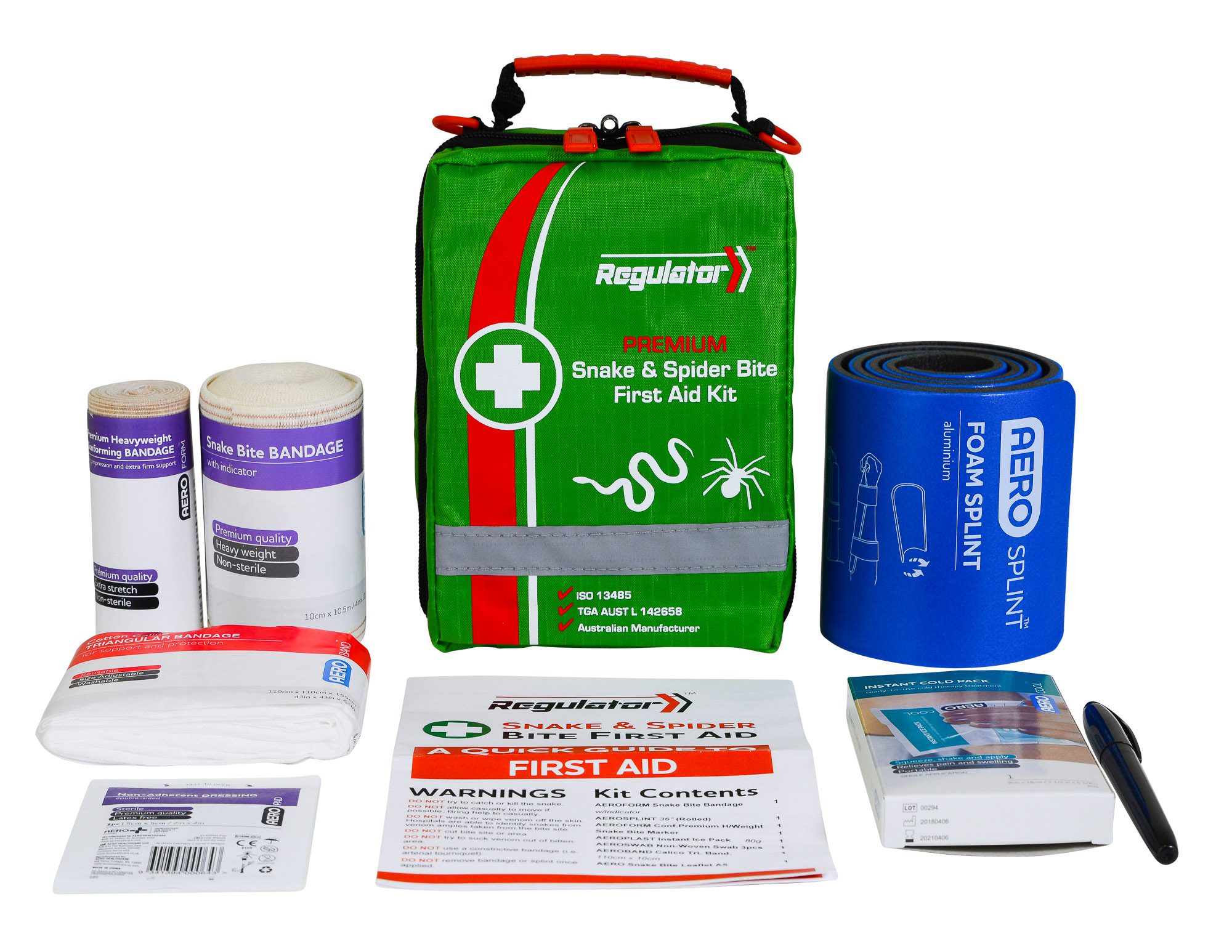Don’t Let a Spider Bite Ruin Your Day: How to Treat and Prevent Spider Bites
Protect Yourself from Spider Bites with Aero Healthcare’s Spider Bite First Aid Kit
As Australians, we are no strangers to spiders. While most spiders are harmless and even beneficial, some species can pose a serious risk to our health. Spider bites can cause a range of symptoms, from mild irritation to severe pain, muscle spasms, and even death. In this article, we’ll explore how to treat spider bites and prevent them from happening in the first place. We’ll also introduce you to Aero Healthcare’s Spider Bite First Aid Kit, which contains all the essentials you need to treat a spider bite quickly and effectively.
According to the Australian Reptile Park, around 2,000 Australians are bitten by redback spiders each year, with around 250 requiring antivenom treatment. Additionally, funnel-web spider bites are responsible for 13 recorded deaths in Australia since the development of antivenom in the 1980s, according to the Australian Venom Research Unit at the University of Melbourne. These statistics highlight the importance of taking spider bites seriously and being prepared with a proper spider bite first aid kit, such as the one offered by Aero Healthcare.
Spider bites are more common than you may think. In fact, Australia is home to some of the world’s most dangerous spiders, including the funnel-web spider and the redback spider. While most spider bites only cause mild symptoms such as pain, swelling, and redness, some bites can be life-threatening if left untreated. That’s why it’s crucial to know how to identify and treat spider bites properly.
So, what should you do if you get bitten by a spider? First and foremost, stay calm. Most spider bites are not life-threatening and can be treated at home. Here are the steps you should take:
- Clean the bite area with soap and water.
- Apply a cold compress or ice pack to reduce swelling and pain.
- Elevate the affected limb if possible.
- Take over-the-counter pain medication if needed.
- Watch for signs of an allergic reaction, such as hives, difficulty breathing, or swelling of the face and throat. If you experience any of these symptoms, seek medical attention immediately.
- It’s important to note that not all spider bites are the same. Some species, such as the funnel web spider, can cause serious symptoms that require immediate medical attention. If you are bitten by a funnel web spider, seek medical attention immediately and apply a bandage using the Pressure Immobilisation Technique. Aero Healthcare’s Spider Bite First Aid Kit contains a unique tension indicator bandage that assists people achieve the correct tension.
What is the Pressure Immobilisation Technique?
The pressure immobilisation technique is a first aid method used to treat certain types of venomous bites or stings, including those from spiders, snakes, and certain marine animals. The technique involves applying a firm bandage to the affected limb, wrapping it tightly enough to slow the spread of venom but not so tight that it impedes blood flow. The Aero Healthcare Snake Bite Bandage can be used for spider bites too!
The pressure immobilisation technique limits the spread of venom throughout the body. When a venomous animal bites or stings, venom can quickly travel through the lymphatic system, which carries immune cells throughout the body. By wrapping the affected limb with a bandage, pressure is applied to the lymphatic system, slowing the spread of venom.
To perform the pressure immobilisation technique, follow these steps:
- If possible, identify the type of animal that caused the bite or sting. This can help medical professionals determine the best course of treatment.
- If the bite or sting is on a limb, apply a bandage over the bite site, wrapping it tightly but not so tight that it cuts off circulation. Start at the bite site and work your way up the limb.
- Once you have wrapped the limb, immobilise it by splinting it with a rigid object, such as a stick or rolled-up newspaper.
- Keep the affected limb immobilised and below heart level.
Seek medical attention as soon as possible.
Prevention is key when it comes to spider bites. Here are some tips to reduce your risk of getting bitten:
- Wear protective clothing and footwear when working outside, especially in areas where spiders are common.
- Keep your home and yard clean and tidy to reduce the number of hiding places for spiders.
- Use insect screens on windows and doors to keep spiders out.
- Don’t leave clothing or shoes outside, as spiders may crawl inside.
- Be cautious when moving items that have been stored for a long time, as spiders may have taken up residence inside.

AFAKLSB contents1
The Regulator Snake & Spider Bite First Aid Kit from Aero Healthcare is designed to help you stay prepared in case you get bitten by both snakes or spiders. The kit contains a range of essential items to help you treat spider bites quickly and effectively, including:
- AEROFORM Snake Bite Bandage with indicator
- AEROBAND Calico Triangular Bandage
- AEROPAD Non-Adherent Dressing
- AEROCOOL Instant Ice Pack
- AEROSPLINT Foam Splint Rolled Aluminium
- AEROSUPPLIES Marker Pen
- AEROGUIDE Snake & Spider Bite Treatment Leaflet



